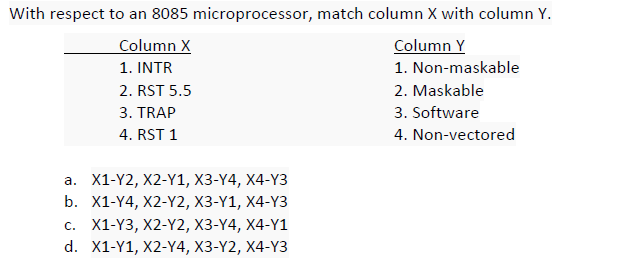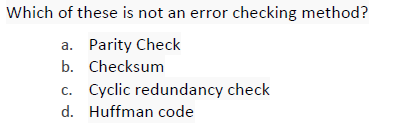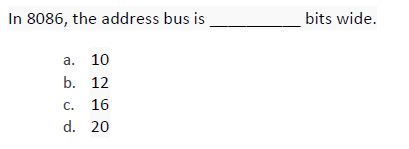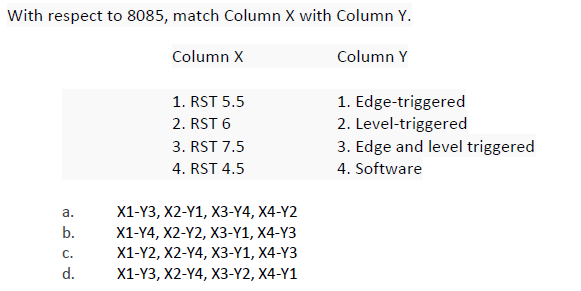Antenna Fundamentals
1)A cell tower antenna needs to cover an area with 120° angular coverage in horizontal plane. The radiation pattern of the antenna should be
2)Antenna A and Antenna B have directivities of 2 dBi and 6 dBi in a given plane, respectively. Which of the two antennas would have larger HPBW?
3)The directivity of an antenna is 9.6 dBi. If the half power beam width (HPBW) is 70° in one plane, the HPBW in the orthogonal plane is, approximately:
4)An antenna has efficiency of 80%. If the directivity of the antenna is 7 dBi, then its gain will be, approximately:
5)The E-field of the wave radiated by an antenna has two orthogonal components with amplitudes of 0.5 V/m and 0.3 V/m. If the phase difference between the two components is 90°, the polarization of the wave is:
6)In a 50 Ω system, if input impedance of an antenna is 68 Ω, the corresponding value of VSWR is, approximately:
7) In a 50 Ω system, if input impedance of an antenna is (50 – j25) Ω at 2.45 GHz, the percentage power reflected from the antenna will be, approximately:
8)AGSM 900 cell tower antenna with 15 dBi gain is transmitting 20 W of power. The power density at a distance of 100 m in the direction of maximum radiation is 5 mW/ m2. What will be the value of power density at a distance of 200 m?
9)Two identical transmitting and receiving antennas are located at a distance of 1 km. If power transmitted is 25 dBm at 10 GHz and received power is -65 dBm, the approximate gain of each antenna is:
10)The diameter of a parabolic dish antenna (with efficiency η = 60%) for 40 dBi gain at 10 GHz is:















